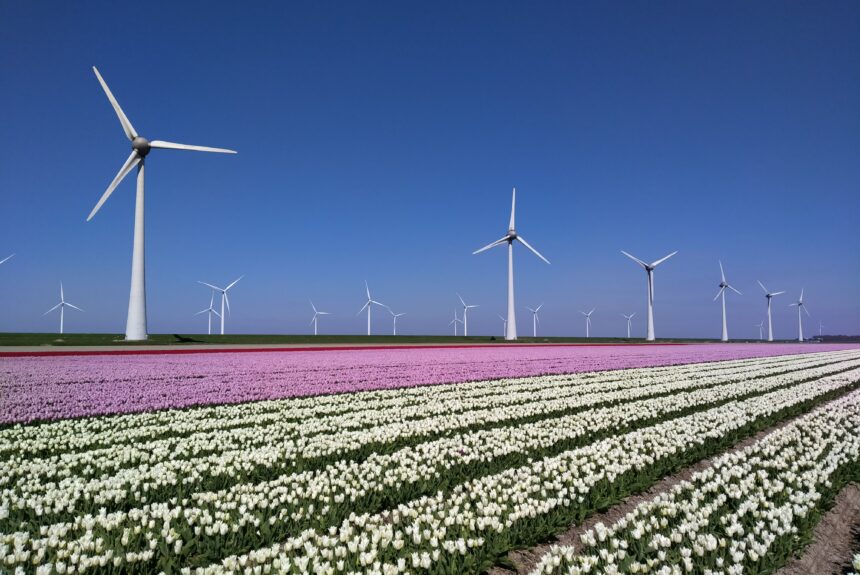As Europe faces historically high temperatures and a heat wave hits the United States, the need to address climate change feels more urgent than ever. To reach net zero emissions domestically by 2050, many experts have stated that the United States will need to rapidly increase its share of cost-competitive clean power sources including solar, wind, and nuclear energy. One of the biggest factors obstructing that growth is not cost, but NIMBYism.
>>>READ: Progressive NIMBYism is One of the Biggest Obstacles to Clean Energy
Regulators and utilities across the country are facing local pushback and NIMBYism (Not in My Backyard) opposition to new clean energy projects, as evidenced in a recently released report from ClearPath.
Using Iowa as a case study, the ClearPath report, Hawkeye State Headwinds, analyzed the feasibility of expanding clean energy generation given county ordinances and local opposition. Iowa has been a national leader in wind energy. In 2020 58% of Iowa’s overall generation came from wind, the largest share of any state in the country.
ClearPath’s report found that opposition to wind power in the Hawkeye State is growing. 16 of Iowa’s 99 counties have enacted local ordinances to hinder the deployment of wind. Six have indefinite moratoriums, three have enacted temporary moratoriums, and seven have ordinances that are prohibitive to development. Furthermore, more than 49% of potential areas that would be suitable for future projects are unable to be further developed because of these local rules.
The report also drew attention to the often underreported issue of transmission capacity. More than 60% of high transmission voltage lines in the state, which are pivotal to delivering clean energy, have historically faced opposition.
Iowa is not alone in its opposition to new development. In fact, a large wave of NIMBYism is impacting the United States and hampering our ability to produce and distribute clean energy. Last winter voters in Maine rejected the buildout of a transmission line that would bring clean hydropower energy in from Canada because they did not want the power line to go through Maine’s forests.
Local opposition has stalled more than just power line projects, it has also prevented, or in some cases shut down, clean energy generation. After lobbying government officials for several years, activists in New York City successfully closed the Indian Point nuclear facility in 2021. Emissions immediately soared in New York, as fossil fuels displaced Indian Point’s carbon-free power.
>>>READ: Green Energy Projects Frustrated by Red Tape
The Battle Born Solar Project in Nevada, which would have been the nation’s largest solar field, was canceled after locals complained that the panels would interfere with recreational activities like biking and skydiving. The project would have powered 500,000 homes with carbon-free electricity had it been built.
Increasing the share of non-carbon or low-carbon energy is essential to reaching domestic and global climate goals. And while local input is crucial to the development process, excessive litigation and protest have stalled or outright canceled clean energy projects across the country. Policymakers at the local, state, and federal levels must find ways to balance the need for community input with the importance of clean energy deployment.
ClearPath’s report included a list of several policies and strategies that could be employed to meet energy demand, one of the most important of these being the need to pursue a tech-neutral energy portfolio. As ClearPath CEO Rich Powell stated:
“This report highlights how challenging a clean energy transition would be if we put all our eggs into one basket. We should focus on a clean energy portfolio approach that includes wind and solar, and other baseload clean energy assets like nuclear energy as well as coal and gas with carbon capture.”
In C3’s Climate and Freedom Agenda, we also outline several policy recommendations to speed up the completion time of key energy and infrastructure projects. One solution that would have the most immediate impact is modernizing the National Environmental Policy Act (NEPA) and limiting the statute of limitations for NEPA-related claims to 150 days, rather than the current 180 days.
As the need to address climate change becomes greater, policymakers at the local, state, and federal levels must be proactive in advancing solutions to bring affordable, reliable, and clean energy to consumers.
The views and opinions expressed are those of the author’s and do not necessarily reflect the official policy or position of C3.
